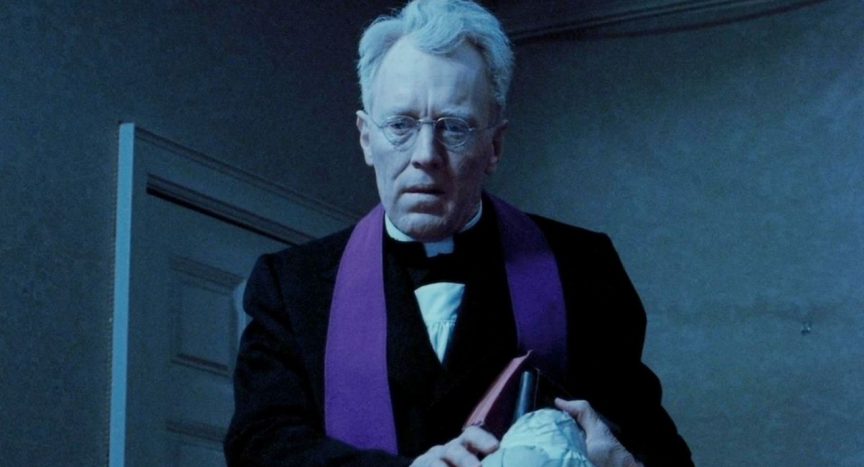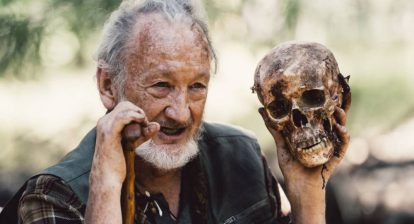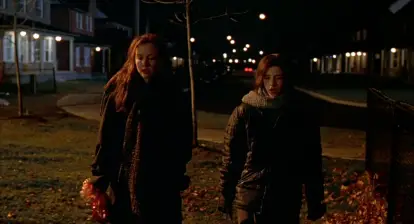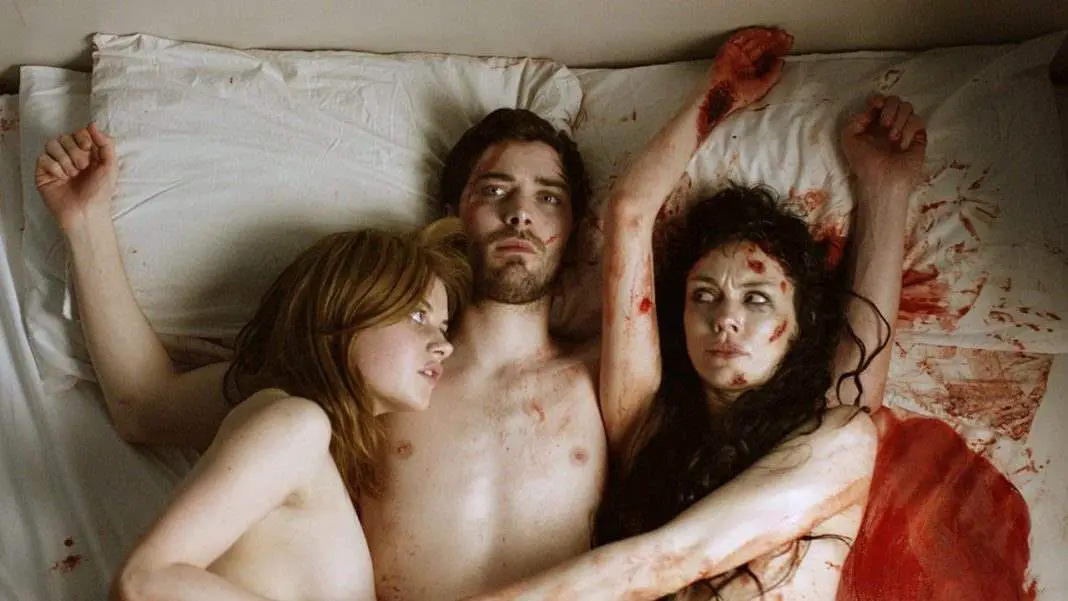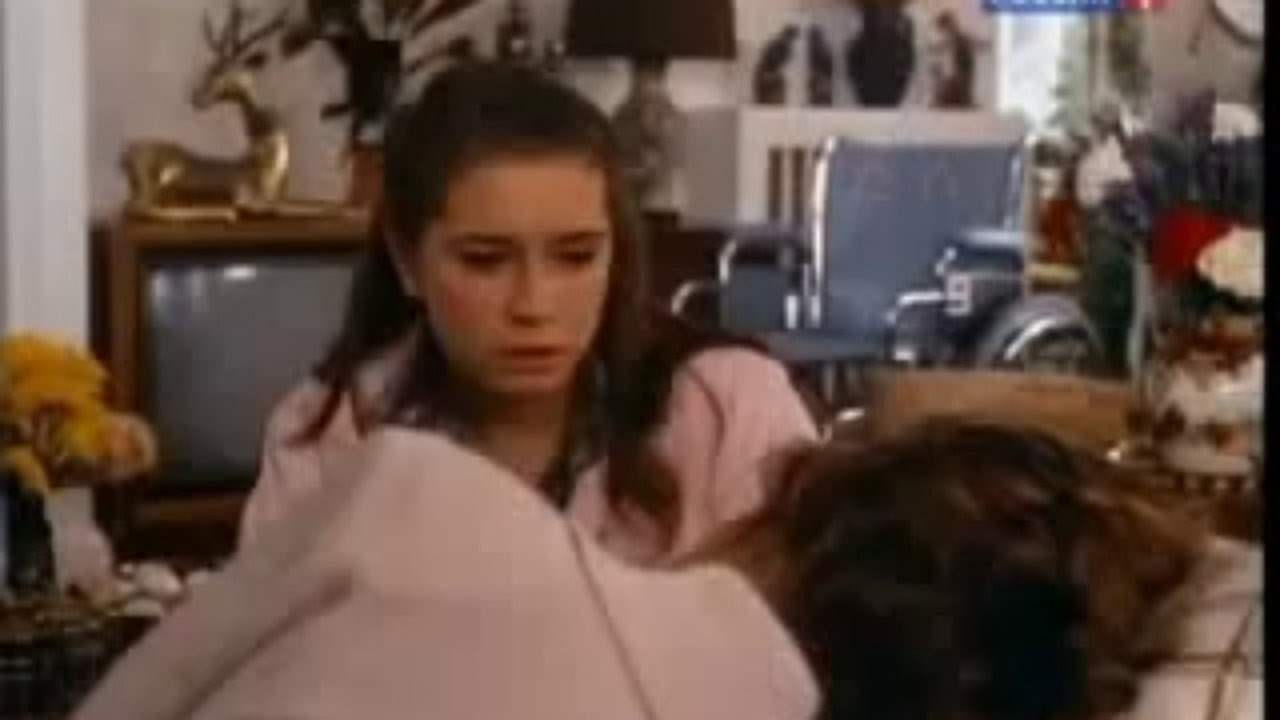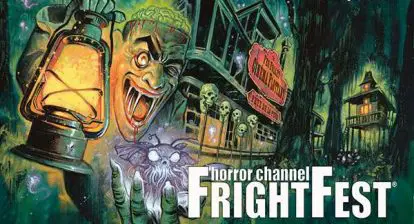Horror films have long served as a mirror, showing us our (often ugly) faces. Horror is also the genre that most frequently deals with the supernatural, and by extension, Christianity. I reflected on how Christianity and horror interact often as I wrote my horror novella Saint’s Blood, due out from Saint Rooster Books in April 2022 (#shamelessselfpromotion). I hope my book can, as these 9 films do, reveal something about how American (French for one entry) perceptions of Christianity have morphed over the last 50 years.
Spoilers Ahead!
The Exorcist
Perennially ranked one of the best horror movies of all time, The Exorcist is an out and out Catholic film. While some within that Church have denounced it (specifically The United States Conference of Catholic Bishops’ Office of Film and Broadcasting, which Warner Brothers played up to sell more movie tickets), the writer of the novel and screenplay William Peter Blatty was a devout Catholic, disgusted by the secular nature of Rosemary’s Baby. He meant to scare audiences into returning to the Catholic Church, which wasn’t actually being left in high numbers at that point in the U.S. According to an annual Gallup Poll, the number of Americans identifying as Catholic actually increased from 22% in 1948 to 27% in 1973, the year the film was released. In that same time span, respondents picking “No Religion” increased from 2% to 5%, which may be what Blatty was perceiving.
Whether Blatty and the film’s decidely-less-Catholic director William Friedkin converted anyone or not, The Exorcist established the trope of the Magic Priest, who frequently saves the day in Possession films. In this case, the Magic Priests are Father Merrin (Max Von Syndow) and Father Karras (Jason Miller). They are imperfect men—vanity in the case of the former, losing faith in the case of the latter—but are unquestionably heroes who give their lives to save the possessed girl Reagan (Linda Blair), which finishes the film’s thesis and one major vein of Christian horror: Evil exists, but God is stronger.
Related: The Exorcist and Satanic Ritual Abuse
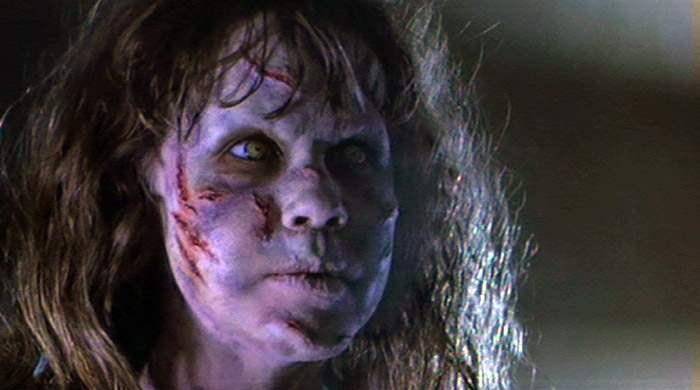
The Omen
The Omen draws from the same well as The Exorcist. Robert Thorn (Gregory Peck) agrees to take a baby from a mother who died in childbirth instead of telling his wife Katherine (Lee Remick) that their son died during childbirth. The little boy he adapts, Damian (Harvey Spencer Stephens), turns out to be the Antichrist, a villain taken straight from the Bible’s finale, the Book of Revelations.
Thorn goes to priests, investigative journalists, and an archeologist who specializes in the Antichrist. All of those men meet with insane deaths. Director Richard Donner and screenwriter David Seltzer leave the audience to draw the conclusion that these deaths were brought about by the forces of evil. What separates this film’s portrayal of Christianity from The Exorcist’s is that at the end of The Omen, the devil wins. The Church, and by extension God, isn’t strong enough to stop the evil. Thorn is killed before he can stop Damian, who will later be adopted by his father’s best friend: the President of the United States.
Related: Why The Omen Franchise Does Not Get the Love it Deserves

Carrie
While The Omen was likely directly inspired by The Exorcist’s success, Brian De Palma’s adaptation of Carrie was not. Stephen King’s original novel was published in April 1974, a little more than four months after The Exorcist film debuted. King could have been influenced by Blatty’s novel, but that seems unlikely because King’s take on Christianity was so different. He and De Palma popularized Christians as the villains of horror films.
Carrie White (Sissy Spacek) is a badly bullied teenage girl, pushed past the brink. While she goes on the killing spree, her overzealous Christian mother Margaret (Piper Laurie) pushes her to it. There are other bullies, but Margaret may be the biggest. She constantly belittles Carrie for things out of Carrie’s control (“I can see your dirty pillows”), insisting that everything her daughter does is a sin. Margaret is a great example of an archetypal religious zealot.
Carries introduces a third take on Christianity in horror films: God will overcome Evil, Evil will overcome God, and now belief in God will create Evil.
Did You Know? Wicked Horror TV Has Classic and Independent Horror Films Available to Stream for Free!
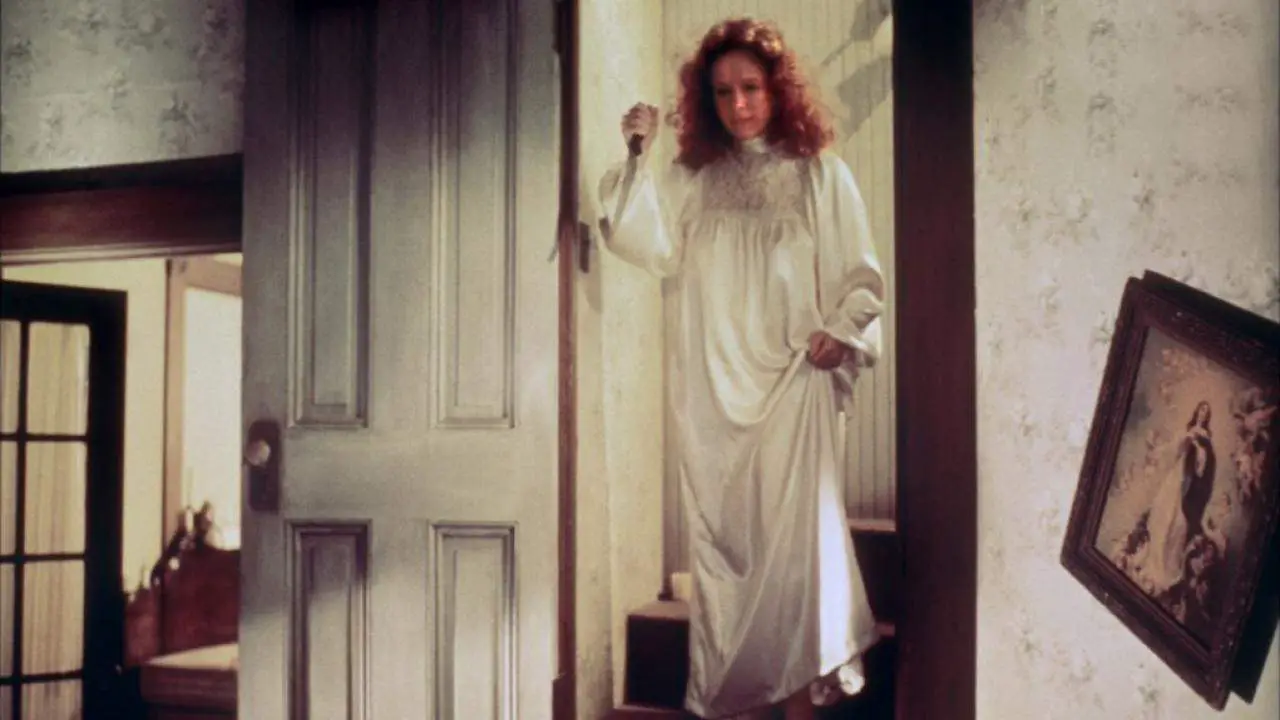
Prince of Darkness
In Prince of Darkness, director-writer (as Martin Quartermass) John Carpenter pits science against spirituality. A Priest (frequent Carpenter collaborator Donald Pleasance) invites Professor Howard Birack (Victor Wong) to research a tube that may or may not contain a liquid embodiment of Satan. Of course, Satan gets leaks out of the tube and possesses some of the researchers, leading to a lot of murder and a rare acting turn from Alice Cooper—who plays the leader of a group of homeless people who surround the Church.
Prince of Darkness is notable because in some ways it’s following in The Omen’s footsteps. Both endings imply that the forces of evil are stronger than God. But in the world of Carpenter’s film, there is an anti-god in another dimension who sent his son, Satan to open our world for him. Which is taking The Omen a step further. Carpenter is treating Christian mythos like he would any other fictional story.
What might be the most surprising is that while The Exorcist was protested by the USCCB-OFB and a whole lot of other folks, Prince of Darkness wasn’t. It could be because of the continued decline of Christianity in the U.S. (that same Gallup Poll reported that Protestants declined by 3%, Catholics went up 1%, while “None” went up by 4% between 1973 and 1987). That lack of outrage could have also been a reflection of a more desensitized world with slashers competing for the most creative kills. Perhaps it had something to do with the difference in box office. The Exorcist earned $441,306,145 while Prince of Darkness only earned $14,182,492.
Related: Why John Carpenter’s Prince of Darkness Was a Surprising Twist on Devil Movies

Tales from the Crypt: Demon Knight
Tales from the Crypt: Demon Knight took Carpenter a step further. While it features a religious figure (William Sadler as Frank Brayker) fighting a Demon (played by Billy Zane) over a Magical Key created by God to lock up demons, there’s nothing overtly religious other than the set designs and props. You could change the Magic Key for any non-religious item, and it wouldn’t change a whole lot.
For the sake of comparison, try to imagine The Exorcist emptied of Catholicism. There’s not much movie left. But Demon Knight (directed by Ernest Dickerson and written by the trio of Mark Bishop, Ethan Reiff, Cyrus Voris) is the next step after Prince of Darkness. The religion in the film is decoration for a mythology invented nearly whole cloth by the screenwriters.
It is worth noting that when Brayker dies, he passes his calling onto Jeryline (Jada Pinkett Smith), an ex-con woman of color, which depending on whose Christianity you think is the real one is either the most or least Christian thing ever.
Related: Blu-ray Review: Tales from the Crypt Presents: Demon Knight

Martyrs
In France, Pascal Laugier delivers the bleakest look at Christianity possible. A distant descendant of Carrie, Martyrs focuses on young women Lucie (Mylène Jampanoï) and Anna (Morjana Alaoui). Lucie escaped after being tortured and Anna reluctantly helps Lucie murder her enemies. Lucie’s obsession with revenge leads to her death and Anna’s torture, which just watching feels like it takes months. Laugier’s portrayal of violence is brutal, among the most extreme to ever be committed to film.
It’s not until the end that Laugier reveals that the people who’ve been torturing Anna are Christians. They’ve been trying to torture someone to the point where they can see into the afterlife while clinging to the last ounce of life. As Anna dies, she whispers to the group’s leader Mademoiselle (Catherine Bégin) what she saw. Mademoiselle goes upstairs where the other torturers are waiting to hear if there’s truly an afterlife. Instead of telling them, Mademoiselle goes to the bathroom and dies by suicide. It’s an incredibly bleak moment, leaving lots of ambiguity over what Anna told her.
It’s by far the bleakest portrayal of Christianity on this list, and might be earned when reflecting on the role white nationalism in this country works hand in hand with Evangelism to brainwash young men, some of whom later become mass shooters (a subject Seamus McGraw writes brilliantly about in his book From a Taller Tower: The Rise of the American Mass Shooter).
Related: Martyrs is French Extremity at its Finest

The Conjuring
The Conjuring is a spiritual sequel to The Exorcist. Like the 1973 classic, The Conjuring tells the story of a nuclear family disturbed by a presence, in this case the Bell Witch. The Witch torments the Perron family, who eventually contact their local priest, who brings in Ed and Lorraine Warren, as portrayed by Patrick Wilson and Vera Farmiga. The two take the place of Father Merrin and Father Karras, first investigating and then eventually performing the Exorcism, which is the most radical thing about this film series. The Conjuring (and its many sequels) often have Ed perform the Exorcism himself rather than turning to a priest, decentering the Catholic church while using its rituals.
What’s less radical is that many believe that the real life Warrens were Charlatans who faked these hauntings to turn a profit. Those people argue that turning the Warrens into heroes hurts their victims. The Conjuring series also seeks to reaffirm the nuclear family, presenting Ed and Lorraine’s real life love story as something far different from what it was.
But like The Exorcist, it’s easy to look past the Evangelist message and greasy real life implications of The Conjuring because director James Wan is a master of his craft. There are legitimately terrifying moments in the film, especially the hide-and-clap sequence.

The Crucifixion
There is an entire strain of films trying to appeal to Evangelical viewers as The Conjuring series has as well as convert other viewers. They tend to feature a set of stock scares and then a priest saving the day, often lacking the technical brilliance of James Wan. The Crucifixion was written by twin brothers Chad and Carey W. Hayes—the same team who wrote the first two Conjuring films.
In The Crucifixion, atheist journalist Nicole Rawlins (Sophie Cookson) travels to Romania to investigate reports that a young woman was killed during an exorcism. Rawlins soons finds herself possessed before she begins to believe in God and is saved. If that sounds familiar, you may have seen one of the other thirty or so films where an atheist is taught faith after being saved by an exorcism. Unlike the characters The Exorcist, the characters in The Crucifixion don’t feel real, despite being based on real people. As in many of these films, the message seems to be more important than the craft, leading to a dull, preachy film.
It comes as less of a surprise when considering two things. The Conjuring made $319,494,638 at the box office. The second is the continued decline of Christianity in America. Turning back to the Gallup Poll, the numbers in 2017 are staggering. Only 38% of respondents identify as Protestant, 9% as Christian nonspecific, 21% as Catholic, and a whopping 20% identify as None. 20% doesn’t sound like a lot until you consider it’s nearly equal to Catholics, and the percentage of Protestant responses has been cut by nearly 30% since the 1940s, which dwarves the amount lost when “Christian nonspecific” was added as an option. So the other possible explanation for this spate of films is that Christian filmmakers are trying to follow in The Exorcist’s footsteps and scare the faith back into people.
Related: Conjuring Screenwriters Carey W. Hayes and Chad Hayes Talk The Crucifixion

St. Maud
St. Maud comes from the Carrie end of the spectrum. Auteur Rose Glass’ film is a quiet character study, focusing on Maud (Morfydd Clark). She’s a hospice care nurse who has recently found religion after making some kind of mistake, which is hinted at but the nature of it is never revealed. What is explicit is that Maud is self flagellating, seemingly in an attempt to find some kind of absolution for that mistake. In what might be the movie’s deftest stroke, Maud is sent to care for lesbian dancer Amanda (Jennifer Ehle). It leads to a confrontation between Christianity’s frequent dismissals of the LGBQT community and the people it affects. The film ends with Maud self-immolating on a beach.
St. Maud has what films like The Crucifixion are lacking: nuance. If you watch the film (which is now available on blu-ray and digital), you’ll come away with a different reading than mine. Good stories can be interpreted in more than one way. St. Maud is a challenging film, showing some of the good—Maud’s sense of solace, her efforts to help others—and the bad—the self-flagellation, intolerance of LGBQT people—of her particular sect of Christianity.
All of this leaves us with the chicken and egg question. Do horror films about Christianity build (or diminish) faith? Or are the films reflecting what’s happening independent of the silver screen?

Follow us on social media: Twitter, Facebook, and Instagram.
